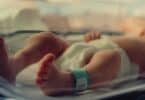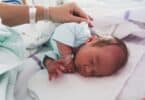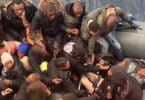Researchers at the University of California, San Francisco (UCSF), have uncovered a potential breakthrough in understanding sudden infant death syndrome (SIDS). Their study reveals that newborns with an unusual pattern of metabolites—byproducts of energy processing—are significantly more likely to die from SIDS. This finding builds on growing evidence that underlying conditions may be detectable early in a baby’s life, offering hope for future prevention strategies.
The UCSF team analyzed blood samples from 354 infants in California who died from SIDS between 2005 and 2011. These samples were compared to those of healthy newborns, matched by gestational age and birth weight. The study, published in JAMA Pediatrics, found that infants with irregular metabolite patterns were 14 times more likely to die from SIDS than those with low-risk profiles.
Lead author Laura Jelliffe-Pawlowski, a professor at UCSF and New York University, expressed her surprise at the findings: “It suggests that babies who die from SIDS may face specific challenges in processing sugar and energy.” However, she cautioned that this research alone is not enough to alter current medical practices.
Currently, newborn heel prick tests screen for 80 genetic and congenital conditions in California, but identifying unusual metabolite patterns linked to SIDS is not yet part of the routine. Further studies, including long-term monitoring of babies with these metabolic markers, are essential before any clinical changes can be recommended.
SIDS, the leading cause of death for infants between 1 month and 1 year of age, has puzzled scientists for decades. Most SIDS cases occur in babies under six months old, with the highest incidence between two and four months. Historically referred to as “crib death” because infants often die while sleeping, SIDS saw a decline in the 1990s following widespread “safe sleep” campaigns. These initiatives promoted placing babies on their backs to sleep, among other safety measures, and led to a dramatic drop in SIDS cases. However, since 1998, SIDS rates have remained relatively high.
In 2020, nearly 3,400 sudden unexpected infant deaths occurred in the U.S., with about 1,389 attributed to SIDS, according to the CDC. While various factors have been explored, including brain abnormalities, abnormal serotonin receptors, and issues with sleep arousal, the cause of SIDS remains elusive. The new UCSF study suggests that problems in glucose metabolism may be another contributing factor.
Importantly, these metabolic markers were detectable through routine newborn heel prick screenings, raising the possibility of early identification of babies at increased risk for SIDS. Dr. Thomas Keene, a pulmonologist at Children’s Hospital Los Angeles, highlights the potential significance: “If we could identify babies at high risk for SIDS at birth and intervene, that would be a major advancement.”
However, Keene also notes a challenge: many infants with the identified metabolic profile never die from SIDS. For any marker to be useful in clinical practice, it would need to be more specific.
Dr. Richard Goldstein, a pediatrician at Boston Children’s Hospital-Harvard Medical School, agrees that further research is necessary before these findings could influence medical guidelines. “We can’t tell parents their child is at risk of an unknown cause of death without creating an immense burden,” he said.
For families who have lost a child to SIDS, understanding these emerging connections between physiology and SIDS may offer a sense of relief. UCSF researcher Scott Oltman hopes that this growing body of knowledge will help parents cope with their grief: “When parents see research linking SIDS to physiological factors, it may help ease some of the guilt they often carry.”
Related Articles:







